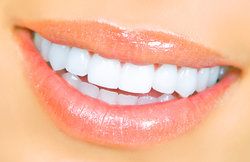Where the Pearly Whiteness Went: Types of Tooth Discoloration
 At the cosmetic, implant, and family dentistry practice of Dr. Nathaniel Podilsky, we stand firmly behind our belief that a beautiful smile is founded upon a solid base of good oral health. However, even the healthiest smile can become discolored over time, which is why we offer a comprehensive range of treatments designed to restore radiance to dulled teeth, such as porcelain veneers and professional in-house teeth whitening.
At the cosmetic, implant, and family dentistry practice of Dr. Nathaniel Podilsky, we stand firmly behind our belief that a beautiful smile is founded upon a solid base of good oral health. However, even the healthiest smile can become discolored over time, which is why we offer a comprehensive range of treatments designed to restore radiance to dulled teeth, such as porcelain veneers and professional in-house teeth whitening.
We are also firm believers in the importance of patient education. We believe that the more patients understand about their oral health, the better able they are to take care of their teeth and gums between visits to our practice. During teeth whitening consultations at our office in Edmonton, types of tooth discoloration are among the topics we discuss with patients. This enables patients to maintain the results of their treatment and avoid the staining agents that caused their teeth to become discolored in the first place.
Basic Categories of Tooth Discoloration
Although there are many possible sources of tooth discoloration, they can all be placed into one of two basic categories, namely extrinsic or intrinsic.
Extrinsic Discoloration
Extrinsic discoloration, as the name suggests, includes all stains that occur on the surface layer - the enamel - of the teeth. These stains generally result from continued exposure to such discoloring agents as coffee, tea, tobacco, dark sodas, red wine, dark fruits and vegetables, and certain other foods and beverages. Extrinsic discoloration also occurs naturally as a result of aging and through years of wear and tear. This is the type of discoloration that tends to respond best to teeth whitening.
Intrinsic Discoloration
Intrinsic discoloration involves stains that lie beyond the enamel and affect the underlying layer, known as the dentin. These more complex stains can result from such factors as trauma to a tooth, genetics, root canal infection and subsequent therapy, overexposure to fluoride, failed dental restorations, and certain antibiotics and other medications. As is the case with extrinsic stains, intrinsic stains can also result from the simple passage of time, as dentin tends to yellow as people age. Older people who suffer from enamel erosion tend to have more obvious problems with intrinsic discoloration because the yellowed dentin is easier to see.
Treating Tooth Discoloration
When it comes to tooth discoloration, the best treatment is prevention. By practicing excellent at-home oral hygiene and visiting our practice at least twice a year for professional cleanings and thorough exams, you can keep your teeth their whitest and most stunning.
If you do require your teeth to be whitened, we offer numerous treatments that can do the trick. These treatments include both in-office and at-home professional teeth whitening, porcelain veneers, porcelain dental crowns, and dental bonding. During your initial consultation, we will help you determine which treatment or combination of treatments is best suited to your unique case so that you can achieve the beautiful smile you desire.
Learn More about Tooth Discoloration
To learn more about the different types of tooth discoloration and how we can treat them, please contact our cosmetic, implant, and family dentistry practice today.



